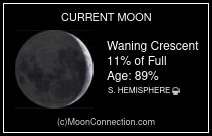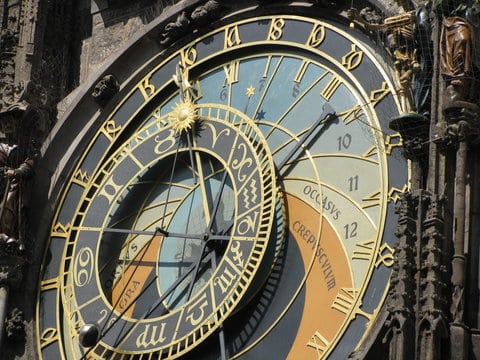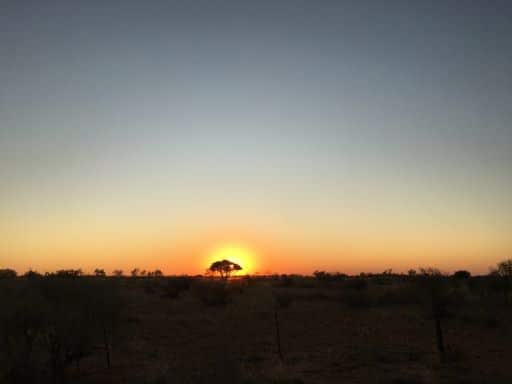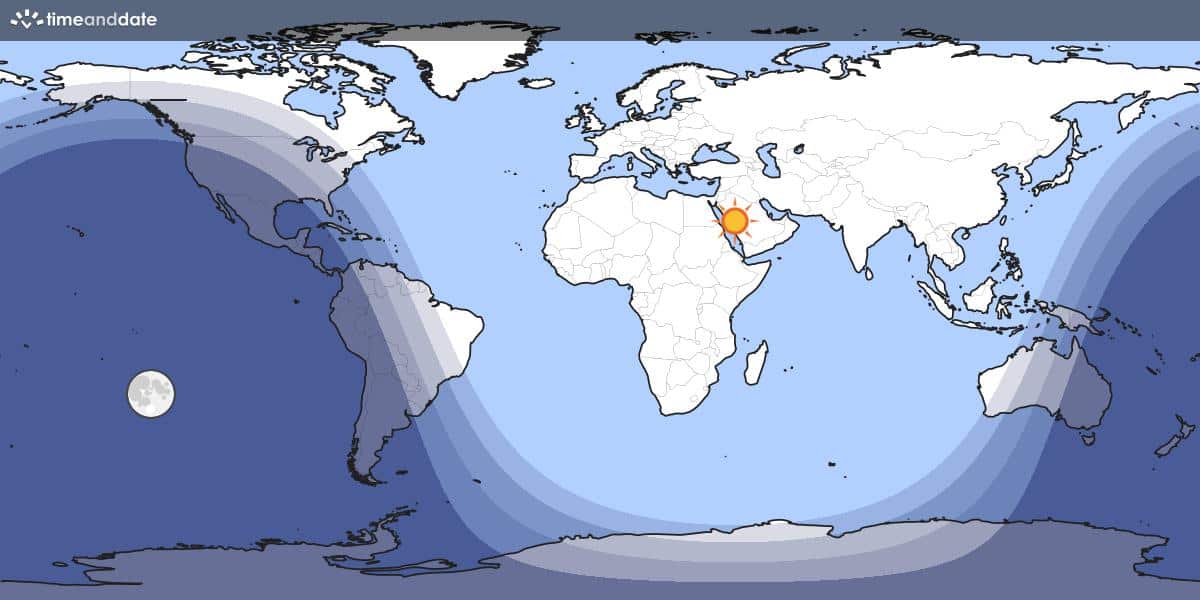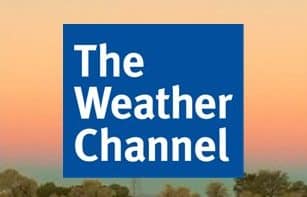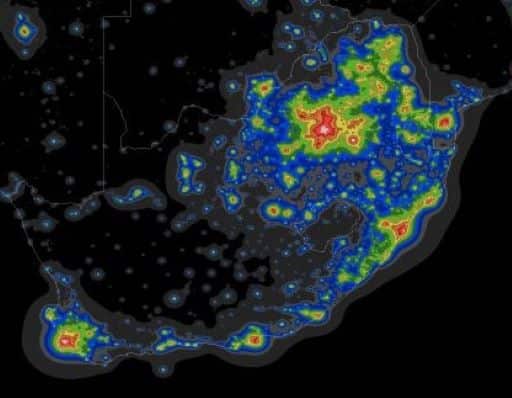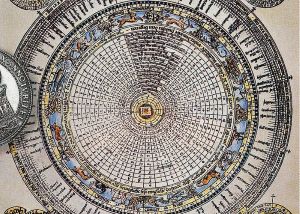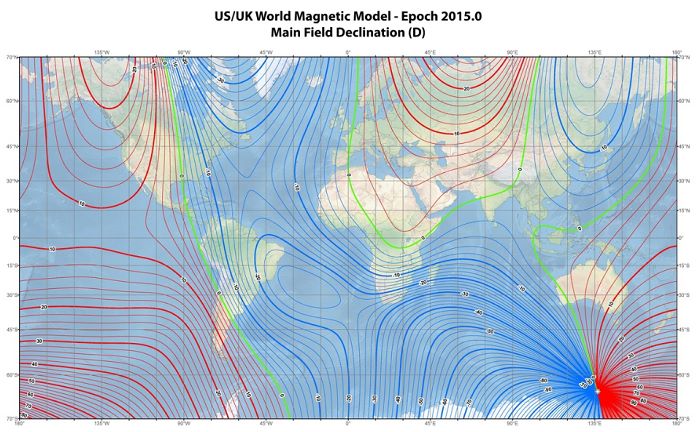Nomenclature
Making sense of the the Cloud’s bewildering and extensive nomenclature
The LMC’s unique nomenclature
The Large Magellanic Cloud’s nomenclature is extensive and bewildering. Indeed, it is peculiar to the LMC, being the product of a considerable number of 20th and 21st century catalogues being published, each with significant overlap with other catalogue acronyms, resulting in mostobjects having a litany of acronyms.
Of course, the venerable NGC catalogue stands supreme. It contains the discoveries of both James Dunlop, who observed the southern skies from the Brisbane observatory at Paramatta, New South Wales, Australia during the years 1823-1827, and John Herschel, observing from the Cape Of Good Hope during the years 1834–1838. Compiled by John Louis Emil Dreyer in 1888, the catalogue contains 366 Large Magellanic Cloud objects. And there things stood until in 1924, at Dr Hertzsprung’s behest, British-born South African astronomer Robert Innes examined some photographs of the large Magellanic Cloud taken by Hertzsprung with the 10-inch Franklin-Adams Star Camera, and published the first 20th century LMC catalogue…
1924: Robert Innes
Acronym: –
In 1924, Robert Innes published his Catalogue of Clusters and Nebulae near the Large Magellanic Cloud. The search was primarily for variable stars, but “a note was taken whenever anything unusual was encountered”. The area searched over RA 4h 50m to 6h 6m at Dec -62°, RA 4h 30m to 6h 15m at -74° and a little in -75° (and we are told, “was very nearly covered by their star maps -64°, Nos 18 and 20 and -70° Nos 16 and 18”).
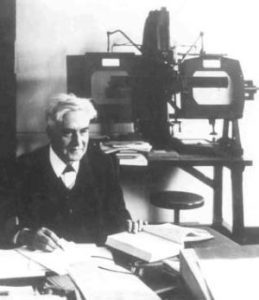
Robert Innes (1861-1933), best known for discovering Proxima Centauri in 1915
1956: Karl Henize
Acronym: N
In 1956, Henize published the results of an extensive survey of both Magellanic Clouds for emission line objects, stars and nebulae. He published five catalogues of objects, three for the LMC and two for the SMC. His “Catalogue of Emission Nebulae in the Large Cloud” lists 221 emission nebulae, many of which have associated nebular components (for a total of 415).
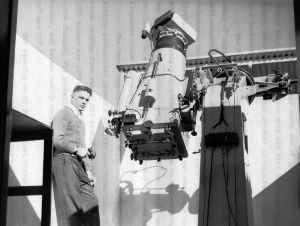
Karl Henize (1926-1993) was an observer for the University of Michigan Observatory from 1948 to 1951, stationed at the Lamont-Hussey Observatory in Bloemfontein, Union of South Africa
1960: Paul Hodge
Acronym: H60b
In 1960, Paul Hodge published a catalogue of 35 clusters of the Large Magellanic Cloud that can be considered genuine globular clusters on the basis of their uncalibrated colour-magnitude diagrams.

Paul Hodge (1934-2019) published five catalogues of LMC star clusters and along with Frances Wright, produced the beautiful boxed photographic atlas of the Cloud in 1967. Image courtesy University of Washington, Department of Astronomy
1963: Harlow Shapley and Eric Lindsay
Acronym: SL
In 1963, Harlow Shapley and Eric Lindsay published a catalogue consisting of 898 LMC clusters, based on searches of ADH Schmidt plates. The listed objects lie between RA 4h24m and 6h34m, and Dec. -63° and -75°. Their catalogue covers the whole range of morphologies, from the large bright aggregations now known as stellar associations, through the dense swarms of stars we recognize as globular clusters, to the smaller gatherings which are the counterparts of our galactic clusters (open clusters). Many of their clusters were subsequently discovered to be background galaxies as distinguishing between small clusters and background galaxies was a limitation of their plate material.
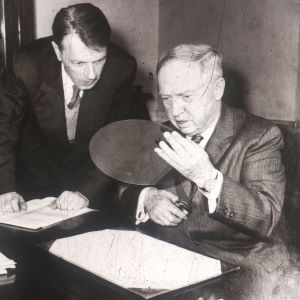
On the right, Harlow Shapley (1885-1972) and Eric Lindsay (1907-1974) at Armagh Observatory in 1959
1963: Gösta Lyngå and Bengt Westerlund
Acronym: LW
In 1963, Gösta Lyngå and Bengt Westerlund published a catalogue listing 483 clusters in the outlying areas. 234 clusters were common to their catalogue and that of Shapley and Lindsay, also published in 1963.
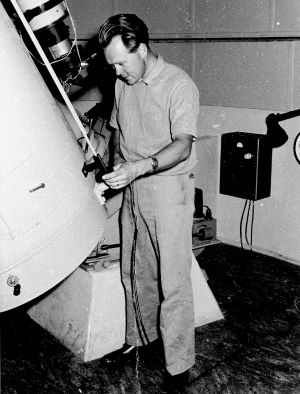
Bengt Westerlund (1921-2008) also wrote a book, The Magellanic Clouds, published by Cambridge University Press, 1997. The photo, from the late 1950s, was taken by his wife

Gösta Lyngå (1930-) also discovered 13 southern hemisphere open clusters and one globular cluster
1966: Paul Hodge and John Sexton
Acronym: HS
In 1966, Paul Hodge and John Sexton published their catalogue based upon their search of the central 125 square degrees of the LMC for non-stellar objects belonging to or superimposed upon the Cloud. The result of their discovery was 457 new objects of which 455 were new clusters. The listed objects lie between RA 4h15m and 6h23m, and Dec. -64° and -73°.
1967: Paul Hodge and Frances Wright
This is not a catalogue but it most certainly needs to be added here as it is a truly splendid and massive boxed photographic atlas. It covers 125 square degrees and includes 81 negative photographs, each 11.5 x 11 inches, as well as a master photographic key. It includes stars down to approximately 18th magnitude. It is no longer in print. I confess that on a long, cold, cloudy winter’s night there is nothing like taking it out and vising old friends.
1970: Peter Lucke and Paul Hodge
Acronym: LH
In 1970, Peter Lucke and Paul Hodge published a catalogue of the OB associations in the Large Magellanic Cloud. The catalogue lists 122 objects with sizes from 15 to 300 pc and numbers of stars from a few to 225, down to a limit of V=14.7 mag. Many of them are NGC objects. Most of the associations range in the ~15 to ~150 pc size, but sixteen – the ones with dimensions up to ~300 pc in diameter – were designated “star clouds” by Lucke and Hodge.
1976: R. Davies, K. Elliot, & F. Meaburn
Acronym: DEM
In 1976, Davies, Elliot, & Meaburn compiled a huge photographic survey of emission nebulae, listing 329 complexes in the LMC, along with an image of each.
1980: Paul Hodge
Acronym: H80b
In 1988, Paul Hodge published a catalogue of 255 new clusters based upon ten fields in the Cloud that were searched for faint, new clusters on deep plates taken with the CTIO 4-m telescope. He noted that most of the new clusters are faint, small, and old, but a few are bright but small.
1982 ESO
Acronym: ESO
In 1982, the massive ESO/Uppsala Survey of the southern sky was published, covering the southern sky from -90 to -17.5
deg. A total of 18,438 objects is listed; of these, about 60 % for the first time. Not a few inhabit the Large Magellanic Cloud.
1988: E. Olszewski, H. Harris, R. Schommer, R. Canterna
Acronym: OHSH
In 1988, Olszewski et all published a catalogue of 156 clusters outside the boundaries of the Hodge and Wright (1967) LMC atlas. The authors found the Hodge and Wright atlas to represent the extent of the LMC to the west, and reasonably well to the east, but to the north and the south, the cluster system extends substantially beyond the boundaries of the atlas. The southern clusters delineate a portion of the “Spiral arm” noted by de Vaucouleurs (1955).
1988: Paul Hodge
Acronym: H88
In 1988, Paul Hodge published a catalogue of 255 new clusters based upon ten fields in the Cloud that were searched for faint, new clusters on deep plates taken with the CTIO 4-m telescope. He noted that most of the new clusters are faint, small, and old, but a few are bright but small – and indeed, with a few exceptions, most are way too faint and small!
1988: E. Kontizas, M. Metaxa, M. Kontizas
Acronym: KMK88
In 1988, Kontizas et al. conducted a survey carried out on deep plates taken with the 3.6m ESO telescope and centred on three fields on or near the LMC bar. They detected 93 small, faint clusters, one of which is.
1989: R. Bhatia & H. MacGillivray
Acronym: BMG
In 1989, Bhatia & MacGillivray (1989) conducted the first automatic search for clusters in the Cloud, resulting in the detection of 284 objects.
1990: M. Kontizas, D. Morgan, D. Hatzidimitriou, E. Kontizas
Acronym: KMHK
In 1990, Kontizas et al. published an extensive catalogue of LMC clusters based on the ESO/SERC Southern Sky Atlas. They presented 1,762 clusters in the large 25×25 degree area centred on the LMC but excluding the crowded regions around Bar. About 600 were new clusters and at the same time, 210 objects previously catalogued as clusters were excluded.
1991: K. Bhatia, M. Read, D. Hatzidimitriou, S. Tratton
Acronym: BRHT
Binary or multiple clusters are another characteristics of many Magellanic Cloud clusters, and in 1991, Bhatia, et al published their catalogue of 64 binary star cluster candidates in the Large Magellanic Cloud.
1996: E. Bica, J. Claria, H. Dottori, J. Santos, A. Piatta
Acronym: BCDSP
In 1996, Bica et al’s catalogue of integrated UBV photometry of 504 star clusters and 120 stellar associations in the LMC, part of them still embedded in emitting gas, added another acronym to the mix.
1999: E. Bica, H. Schmitt, C. Dutra, H. Oliviera
Acronym: BSDL
In 1999, Bica et al. published the result of their survey of extended objects in the LMC carried out on the ESO/SERC and J Sky Survey Atlases, checking entries in previous catalogues and searching for new objects. The census provided a whopping 6,659 objects including star clusters, emission-free associations and objects related to emission nebulae.
2008: Bica, et al
In 2008, Bica et al. updated their 1999 catalogue. It contains a compilation of all the previously published catalogues… and they thus produced the largest catalogue of extended objects in the Magellanic System. An important contribution was due to the catalogue based on the OGLE-II data published by Pietrzynski et al. (1999), which incidentally, also added the OGLE acronym. This massive catalogue contains a dizzying 9,305 objects (excluding background galaxies).
2011: F. Werchan and D. Zaritsky
Acronym: WZ2011
In 2001, Werchan and Zaritsky published the structural parameters of 1,066 LMC star clusters.
Not to mention…
There are a multitude of catalogues listing LMC planetary nebulae, supernovae, Wolf-Rayet stars, LBVs, variable stars, ad infinitum.



